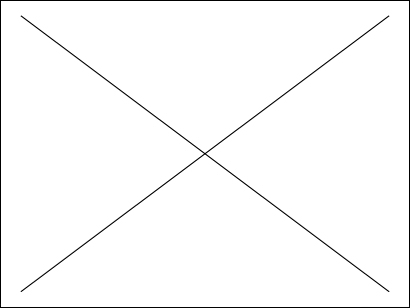Livre - Μεταλλικά σφυρήλατα εξαρτήματα
D 411
Description
Livre
Μουσείο Κρητικής Εθνολογίας
Gratsia Éléna
Roussi Vasso
Presentation materielle : 1 vol. (197 p.)
Dimensions : 32 cm
SUMMARY The hammered metalware can be used in restorations as well as in new constructions. Old houses in historical quarters of towns and monuments such as castles, venician villas, churches, monasteries represent a vital form of Cretan culture. These monuments not only give evidence of the history and civilization of the past, but they also stimulate original creations. As the ruthless destruction of old architectural styles in Greece is endangering the historical relationship between the city and its inhabitants their significance is profound. Traditional hammered metalworks such as window and door props and balcony railing correspond to architectural styles of older epochs. Old door-locking mechanisms are replaced by new ones that are safer and easier to handle. It would be out of question to use them in modern constructions with the notable exception of the «kerkeli» (knocker used also as a handle). In restorations of historical buildings however, fidelity to the old methods is required. We cannot use modern methods, because nails and the mode of attachment is a congenial part of the old composition. Proportions should also be respected because the results of a careless approach may be detrimental. The transgression of the traditional pattern (production/proportions), a common phenomenon in recent constructions, comes to a naive jamble of modern and old styles. This aesthetic offense has nothing to do with the «local color». The traditional Cretan house and the Renaissance and Neo-classical buildings are products of a coherent, functional and aesthetic ideology that correspond to the technological level and to the expressive, emotional necessities of their epoch. So the fragmentary and eclectic use of old type elements do not fit to new, standardized constructions. During the Twenties a new turn to the roots of tradition took place. The initiators, A. Zahos, D. Pikionis, were aiming at the research, study and assimilation of architectural heritage as a stimulation for new designs. In the same spirit, we believe that we have a lot to learn from the simple craftsmen working on metal and wood (fig. 72, 73). Restoration of deserted, traditional houses and monuments (castles or Venician villas) causes the immediate demand of hammered metalware. Thus, the traditional mode of fabrication must be revived by supporting the existent workshops and creating new ones. Young people must be trained in the traditional manner in order to contribute to the restoration efforts. There are some traditional workshops today in Crete, that fabricate mainly agricultural tools and articles for house construction. Modern technique is introduced to these workshops without influencing the quality of the object produced. Sometimes these craftsmen usually working alone, decline an offer when an aid is needed because of the side or the shape of the commanded article. It is difficult to find a part-time collaborator and they cannot occupy a permanent one. Well organized production units use machine tools for the elaboration of the metal. In order to face this kind of competition, traditional workshops are obliged to introduce modern technology too, combining the old and modern methods. For instance, the hand-made (hammered) parts of a tool are joined by modern soldering. Hammered metalware, which can be used without any special precaution in modern constructions is the «kerkeli». A simple comparison between the hand made kerkeli and the machine reproduction of it proves the aesthetical advantages of the first. The difference is obvious. The machine made article is defective in plastic harmony and equilibrium. That is why we suggest the use of traditional methods and proportions. If the metalware is created by hand, the product will radiate the very soul of the craftsman, who has already produced show-pieces of inspiration and technique.
ΠΕΡΙΕΧΟΜΕΝΑ ΕΙΣΑΓΩΓΗ, p. 13 Η ΚΡΗΤΗ ΤΩΝ ΝΕΟΤΕΡΩΝ ΧΡΟΝΩΝ – ΚΟΙΝΩΝΙΑ ΚΑΙ ΠΟΛΙΤΙΣΜΟΣ, p. 16 Ο ΣΙΔΗΡΟΣ ΚΑΙ Η ΙΣΤΟΡΙΚΗ ΑΝΑΔΡΟΜΗ ΤΗΣ ΧΡΗΣΙΜΟΠΟΙΗΣΗΣ ΤΟΥ ΣΤΗΝ ΚΡΗΤΗ, p. 21 ΑΝΟΙΓΜΑΤΑ ΤΟΥ ΚΡΗΤΙΚΟΥ ΣΠΙΤΙΟΥ, p. 25 ΑΝQΙΓΟΜΕΝΑ ΤΜΗΜΑΤΑ, p. 28 Πόρτες εξωτερικές, p. 28 Πόρτες εσωτερικές (μεσόπορτες), p. 30 Παράθυρα, p. 32 ΜΕΤΑΛΛΙΚΑ ΕΞΑΡΤΗΜΑΤΑ, p. 35 Μεταλλικά εξαρτήματα της πόρτας, p. 35 Μεταλλικά εξαρτήματα ταυ παραθύρου, p. 36 ΜΑΣΚQΥΠΑ, p. 37 Αρσενικά Μάσκουλα, p. 37 Θηλυκά Μάσκουλα, p. 41 Μεντεσέδες ή μπαστουβάνια, p. 41 ΚΟΝΤΟΜΗΡΙ, p. 44 ΖΕΜΠΕΡΕΔΕΣ, p. 46 ΚΛΕΙΔΑΡΙΕΣ, p. 47 Κλειδαριά ζεμπερές, p. 47 Διακοσμητικό στοιχείο κλειδαρότρυπας, p. 55 ΚΛΕΙΔΙΑ, p. 56 ΚΕΡΚΕΠΙΑ, p. 57 ΣΙΔΕΡΙΕΣ – ΜΠΑΛΚΟΝΙΑ, p. 63 ΚΑΤΑΣΚΕΥΗ ΣΦΥΡΗΛΑΤΟΥ ΑΝΤΙΚΕΙΜΕΝΟΥ, p. 68 Με ταυ παραδοσιακό τρόπο, p. 68 Ροζέτα ή ροδέλα, p. 68 Κρίκος, p. 68 Ρίζα, p. 69 Μέ τη σύγχρονη τεχνολογία, p. 72 ΜΕΛΛΟΝΤΙΚΗ ΧΡΗΣΗ – ΠΡΟΤΑΣΕΙΣ, p. 73 ΣΧΕΔΙΑΣΤΙΚΑ ΚΑΙ ΦΩΤΟΓΡΑΦΙΚΑ ΣΤΟΙΧΕΙΑ, p. 77 Ζεμπερέδες, p. 79 Κλειδιά, p. 82 Κλειδαριές, p. 84 Κερκέλια, p. 87 Παράθυρα, p. 107 Μεσόπορτες, p. 112 Εξώπορτες, p. 116 Σιδεριές, p. 151 Μπαλκόνια, p. 171 Σιδερένιες αυλόπορτες, p. 176 ΣΥΜΠΛΗΡΩΜΑΤΙΚΑ ΣΤΟΙΧΕΙΑ ΑΠΟΤΥΠΩΜΕΝΩΝ ΑΝΤΙΚΕΙΜΕΝΩΝ, p. 178 SUMMARY, p. 195 ΒΙΒΛΙΟΓΡΑΦΙΑ, p. 197
Summary in english
